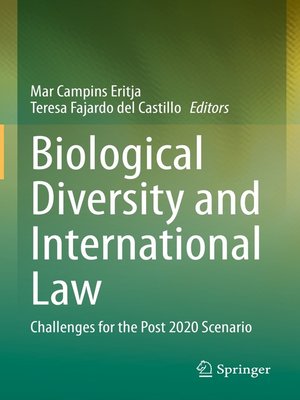Biological Diversity and International Law
ebook ∣ Challenges for the Post 2020 Scenario
By Mar Campins Eritja

Sign up to save your library
With an OverDrive account, you can save your favorite libraries for at-a-glance information about availability. Find out more about OverDrive accounts.
Find this title in Libby, the library reading app by OverDrive.



Search for a digital library with this title
Title found at these libraries:
| Loading... |
The book focuses on the interactions between international legal regimes related to biodiversity governance. It addresses the systemic challenges by analyzing the legal interactions between international biodiversity law and related international law applicable to economic activities, as well as issues related to the governance of biodiversity based on functional, normative, and geographic dimensions, in order to present a crosscutting, holistic approach. The global COVID-19 pandemic, the imminent revision of the Strategic Plan for Biodiversity 2011-2020, and the Aichi Targets have created the momentum to focus on the interactions between the Convention on Biological Diversity and other international environmental regimes.
Firstly, it discusses the principles that inspire biodiversity-related conventional law, the soft law that conveys targets for enforcement of the Biodiversity Convention, their structural, regulatory and implementation gaps, the systemic relations arising from national interests, and the role of scientific advisory bodies in biodiversity-related agreements. The second part then addresses interactions in specific conventional frameworks, such as the law of multilateral trade and global public health, and the participation of communities in the management of genetic resources. Lastly, the third part illustrates these issues using four case studies focusing on the challenges for sustainability and marine biodiversity in small islands, the Arctic Ocean, the Caribbean Sea, and the Mediterranean Sea, as a way to strengthen a horizontal and joint approach.The book is primarily intended for academics, researchers, and students interested in international environmental law and policy and in interactions for creating conditions for fair, sustainable, and resilient environmental development. By offering an analysis of instruments and criteria for systemic relations in those areas, it will also appeal topublic and private actors at the domestic and international level.






